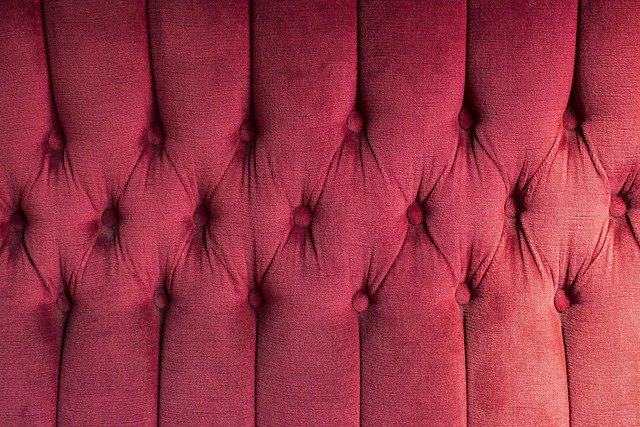Selecting the Perfect Sofa: A Living Room Buyer's Guide
Choosing the right sofa can transform your living room into a comfortable, stylish hub. This comprehensive guide covers sofa styles, construction quality, layout planning, upholstery options, care tips, and budgeting advice so you can pick a couch that fits your lifestyle and space. Learn how to evaluate frames, springs, cushions, and fabrics to invest in a sofa that lasts and looks great.

A sofa sets the tone for your living room — it’s both a practical piece of furniture and a style statement. Making the right choice requires looking beyond appearance to factors like size, construction, upholstery, and long-term value. This guide outlines the essentials so you can select a couch that matches your daily needs, room proportions, and aesthetic goals.
Sofa styles to suit every space
Sofas are made in many silhouettes to match different layouts and lifestyles. Traditional three-seat sofas provide a familiar, balanced profile with arms and cushioned backs, working well in formal or family rooms. Loveseats offer compact seating for two and are ideal where space is limited. Sectionals are a modular, flexible option — they can fill large open-plan areas or be pushed into a corner to create an intimate seating zone.
If you need versatility, sleeper sofas double as guest beds, while modular systems let you change the configuration as circumstances evolve. Contemporary designs include chaise lounges, apartment-sized sofas, and sleek low-back models for modern interiors. Always pair the sofa style with the scale of the room to avoid overcrowding or visual imbalance.
Construction and durability: what matters
The internal build of a sofa determines how it performs over years of use. Frames made from kiln-dried hardwood resist warping and generally outlast frames made of softwood or particleboard. Check how pieces are joined: corner blocks and joints that are glued and screwed are stronger than simple stapled assemblies.
Support systems are another key element. Higher-end sofas often feature eight-way hand-tied springs that deliver even, resilient support. Sinuous (S-shaped) springs are a durable, more affordable alternative. Cushion fillings range from high-density foam that retains shape and support, to down or down-blend fills that offer a plush feel but need regular fluffing and will compress over time. Many people prefer a foam core wrapped in down for a combination of structure and softness.
Planning your living room layout
Measure your room and map the intended sofa placement before you shop. Account for traffic flow and leave clear walkways; avoid blocking doors and entrances. A helpful rule is to keep roughly 18 inches between seating and a coffee table to allow comfortable movement.
Identify the room’s focal point — a TV, fireplace, or large window — and arrange seating toward it. In smaller rooms, pair a compact sofa with a loveseat or accent chairs to create a flexible setup. In open-plan spaces, use the back of a sofa to define zones, creating visual separation without adding walls.
Budgeting and long-term value
Think of a sofa as an investment in daily comfort and aesthetics. Typical price brackets are: entry-level pieces starting near $500, mid-range sofas between $1,000 and $2,500, and bespoke or luxury options above $2,500. Price often reflects the quality of materials, craftsmanship, and brand reputation.
Consider expected lifespan when weighing costs. Cheaper sofas may require replacement within a few years, while a well-built sofa can last a decade or more with proper care. Households that use the sofa heavily should prioritize a durable frame and quality cushions to save money over time.
| Sofa Type | Average Price Range | Expected Lifespan |
|---|---|---|
| Basic Sofa | $500-$1,000 | 3-5 years |
| Mid-Range Sofa | $1,000-$2,500 | 7-10 years |
| Luxury Sofa | $2,500-$5,000+ | 10-15+ years |
| Sectional | $1,500-$4,000 | 5-10 years |
Prices, rates, or cost estimates mentioned in this article are based on the latest available information but may change over time. Independent research is advised before making financial decisions.
Choosing upholstery and caring for it
Fabric choice affects both aesthetics and practicality. Performance fabrics such as microfiber and blended synthetics resist stains and abrasion, making them excellent for homes with kids or pets. Leather offers a classic, long-lasting look and can age gracefully with a patina but benefits from occasional conditioning to prevent drying and cracking. Natural fibers like cotton or linen feel breathable and soft but may show stains and wear sooner unless treated or mixed with synthetics.
Color and pattern are practical choices: darker shades conceal dirt, while patterned fabrics can hide minor marks. Removable cushion covers simplify cleaning, and always follow the manufacturer’s care instructions. Before using any cleaner, spot-test it on an inconspicuous area.
Final checks before you buy
Whenever possible, test a sofa in person. Sit for several minutes to judge seat depth, cushion firmness, and back support — comfort preferences vary, so trust how it feels. Verify delivery measurements: measure doorways, stairwells, elevators, and hallways to ensure the sofa can be moved into place without damage.
Ask about warranties and what components they cover, including frame, springs, and upholstery. Factor in delivery and assembly fees, and request fabric swatches to view colors under your home lighting before committing.
Making the right choice for your home
Balance your lifestyle, budget, and design goals when selecting a sofa. Choose construction and fillings that match how the piece will be used, select an appropriate size for the room, and prioritize comfort as much as appearance. Whether you prefer a sleek modern couch, a family-ready performance fabric sofa, or a handcrafted luxury piece, thoughtful selection and routine maintenance will help ensure your sofa provides years of comfort, functionality, and style.






